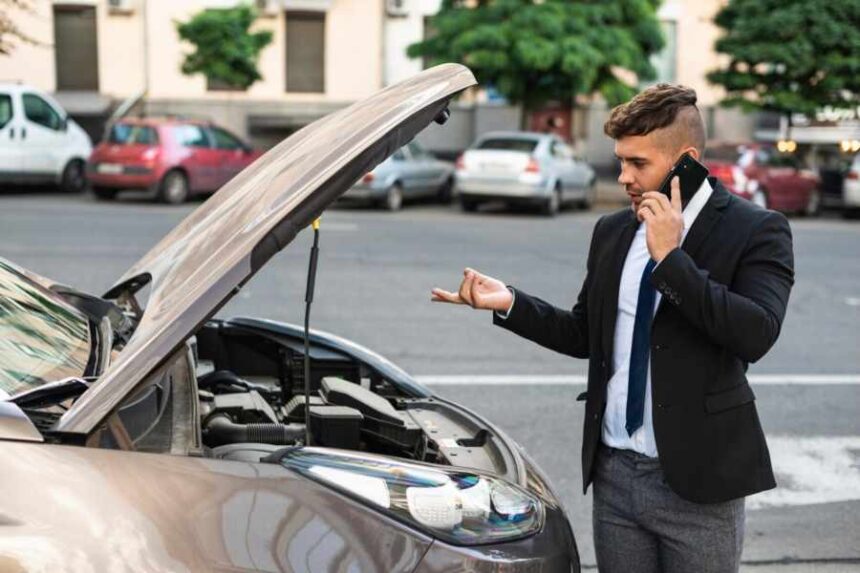Hatchbacks have long been favored for their compact size, fuel efficiency, and practicality. However, when these vehicles end their road life due to mechanical failure, accident damage, or simple wear and tear, they often become difficult to sell through traditional channels. A broken-down hatchback may no longer run, but it still has value if sold legally and adequately.
- Understand the Legal Requirements Before Listing the Vehicle
- Determine Whether the Hatchback Should Be Scrapped or Sold for Parts
- Be Transparent About the Vehicle’s Condition
- Compare Offers From Multiple Buyers for Best Value
- Know When to Apply for a Salvage or Nonrepairable Title
- Prepare the Car for Pickup and Finalize the Transfer
One convenient way to get started is by exploring options like byecar.com, a nationwide car buyer that quickly helps owners offload junk or inoperable vehicles. While private sales can drag out for weeks with inconsistent buyers, an organized process ensures the car is removed rapidly and safely, with payment handled fairly and legally.
Understand the Legal Requirements Before Listing the Vehicle
Confirm that your paperwork is in order before selling a broken-down hatchback. Most states require the seller to have a valid vehicle title in their name. If the title is missing, damaged, or has liens, you must resolve those issues through the Department of Motor Vehicles before proceeding.
In addition to the title, sellers should complete a bill of sale, document the odometer reading (if applicable), and remove the license plates before finalizing the transfer. Some states require a release-of-liability form to be submitted so you’re no longer responsible for future tickets, tolls, or violations tied to the vehicle.
Determine Whether the Hatchback Should Be Scrapped or Sold for Parts
Not all broken-down hatchbacks should be sold as is. Some may contain valuable components worth removing and selling individually. For example, undamaged doors, catalytic converters, wheels, and infotainment systems can fetch decent prices when sold separately. However, stripping a vehicle for parts requires time, tools, and a safe place to store what’s removed.
On the other hand, scrapping the car as a whole is easier and faster. Scrap yards or junk car buyers evaluate hatchbacks based on their weight, condition, and remaining usable parts. Popular models such as the Honda Fit, Toyota Matrix, and Ford Focus may yield better offers due to strong aftermarket demand for parts.
Choosing between these routes depends on how much effort you want to invest and how urgently you need the car removed. If convenience is the priority, selling the hatchback in one piece is better.
Be Transparent About the Vehicle’s Condition
Accurate representation of your hatchback’s condition helps attract the correct type of buyer and prevents disputes. Whether selling to a scrap yard, a private party, or through a vehicle-buying service, provide a clear overview of the damage or mechanical issues.
Take photos from multiple angles and note any salvageable parts. Include information such as:
- Whether the vehicle starts
- Mileage (if visible)
- Condition of the tires and interior
- Any history of accidents or major repairs
Being upfront about what works—and what doesn’t—saves time and avoids misunderstandings. Buyers are often more willing to pay a fair price when they feel the seller has been honest.
Compare Offers From Multiple Buyers for Best Value
Even broken-down hatchbacks have varying degrees of value depending on make, year, and local demand. Avoid accepting the first offer you receive. Instead, contact several local junkyards, auto recyclers, or vehicle-buying services to gather estimates.
When comparing offers, look beyond just the quoted price. Check if towing is included, whether documentation support is offered, and how quickly payment will be made. Some buyers may quote slightly higher but deduct towing fees later, reducing your overall return.
Know When to Apply for a Salvage or Nonrepairable Title
Sometimes, your hatchback may be classified as a salvage or non-repairable vehicle, especially after an accident. If an insurance company declared the car a total loss, the title may need to be converted before selling it.
A salvage title allows a buyer to repair and re-register the vehicle, while a non-repairable title limits the car’s use to parts or scrap. Most states require disclosure of this status to any potential buyer. Selling without doing so could lead to legal issues later, especially if the buyer intends to rebuild and register the vehicle without knowing its history.
Make sure the title reflects the correct classification. Buyers specializing in salvage vehicles will still purchase hatchbacks with these labels, but will want assurance that everything is documented correctly.
Prepare the Car for Pickup and Finalize the Transfer
Once a sale is arranged, prepare the hatchback for removal. Remove all personal items, remove license plates, and gather all documentation. If the buyer is towing the car, ensure it is accessible and clear of obstructions.
At pickup, verify that payment is processed as agreed. Whether receiving cash, a check, or an electronic transfer, always get a written receipt detailing the transaction. Include the VIN, sale amount, and contact information for both parties.
Immediately notify the DMV of the sale and cancel the vehicle’s insurance to avoid further billing. Submitting a release of liability form closes your legal responsibilities and prevents future problems.




